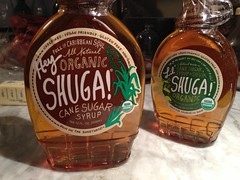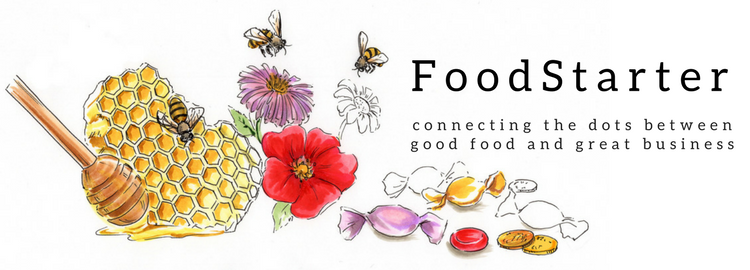 Congratulations to all of the great good food confectioners who made it as finalists in the awards. The winners in all the Good Food Awards categories will be announced January 18, 2013 in San Francisco.
Congratulations to all of the great good food confectioners who made it as finalists in the awards. The winners in all the Good Food Awards categories will be announced January 18, 2013 in San Francisco.
Having wrangled judging of 200 or so confections that candy makers from around the United States entered, thinking through the nitty gritties of ingredients sourcing versus expert confectionery skills…well this was one complex challenging process.
Who are These Finalists?
Very likely many you had not heard of before. The finalists come from across the U.S. and tend to have strong local followings with some distribution online and in stores around the country.
You’ll notice the word “farm” appears often, with goal milk caramel being popular. Many finalists also procure key ingredients from local farms. Notice how simple and classic the finalist flavors are.
About the Ingredients
The confections entry guidelines did not specify the chocolate covering (couverture) need be organic. Despite many entrants making their candy with the best of intentions, the Good Food Awards’ exacting guidelines make qualifying — even without taking the candy’s excellence into account — an exercise in thoughtful sourcing.
“Finalists are those entrants that rise to the top in the Blind Tasting and are also able to clearly articulate how they fit the Good Food Awards industry-specific criteria of environmental and social responsibility. Finalists attested to responsible production by detailing their efforts to eliminate or reduce pesticides, herbicides and chemical fertilizers, source ingredients locally where possible, implement water and energy conservation, ensure traceability to the farm level, practice good animal husbandry and exercise fair and transparent treatment of workers and suppliers.”
 The criteria did not allow genetically modified ingredients except in miniscule amounts, as part of couverture soya lecithin or if perhaps a recipe contained a dollop of corn syrup per batch. (Many caramels we love were not qualified due to use of high fructose or genetically modified corn syrup.)
The criteria did not allow genetically modified ingredients except in miniscule amounts, as part of couverture soya lecithin or if perhaps a recipe contained a dollop of corn syrup per batch. (Many caramels we love were not qualified due to use of high fructose or genetically modified corn syrup.)
The Silver Lining: Demand for Sustainably Produced Ingredients
When making great candy, the sourcing criteria often revolves around finding the most delicious ingredients, perhaps largely seeking sustainable or organic, with some concessions (or faith) when it comes down those 20% of ingredients that add special flavors and textures. This criteria may be at odds with the Good Food Awards. For example, excellent ingredients can come from large European companies who source from some other entity, all prohibitive to track.
 The Good Food Merchant Guild and many food crafters who entered are now pressing their suppliers to share more about their sourcing and to make more “good” ingredients available.
The Good Food Merchant Guild and many food crafters who entered are now pressing their suppliers to share more about their sourcing and to make more “good” ingredients available.
(I’m excited to explore a organic new corn syrup substitute, Hey Shuga!, made from cane sugar (which is non-GMO) from the Dominican Republic.)
Confections Finalists
Barbary Brix, The Salty Dog California
Bees & Beans, Mint Bar Oregon
Big Picture Farm LLC, Goat Milk Chai Caramels Vermont
Chocolats Latour, Honey Basil Chocolate, Ohio
Escazú Artisan Chocolates, Dark Chocolate, Basil Ganache North Carolina
Fat Toad Farm, Salted Bourbon Goat’s Milk Caramel Sauce Vermont
Feve Artisan Chocolatier, Pistachio Rosemary California
Her Coconess Confections, Vanilla Bean Salted Caramels California
Hot Cakes Molten Chocolate Cakery, Pacific Coast Sea Salt Caramel Sauce Washington
Lillie Belle Farms, The Most Awesome Chocolate Bar EVER Oregon
Looking Glass Creamery, Caramelita North Carolina
Serendipity Confections, Fleur de Sel Caramels Colorado
Sweetdragon Baking Company, Black Sesame Brittle California
Zoë’s Chocolate Co., Sesame Tahini Crunch in Dark Chocolate Pennsylvania
Arrowhead Chocolates, Huckleberry Truffle Oregon
The Big Tip
With the Good Food Awards, the fewer the ingredients, the greater the chance a food crafter will fit the criteria.
See all the caramel on the list? It’s easier to source 4 ingredients: sustainable butter and cream, with organic sugar and responsibly harvested sea salt. The second you start adding in other flavors and inclusions, both the recipe and the sourcing gets more complex. The more complex the recipe, the greater the chance some judges may not find the flavor appealing.
Thoughts? Which finalists looks yummy to you?






